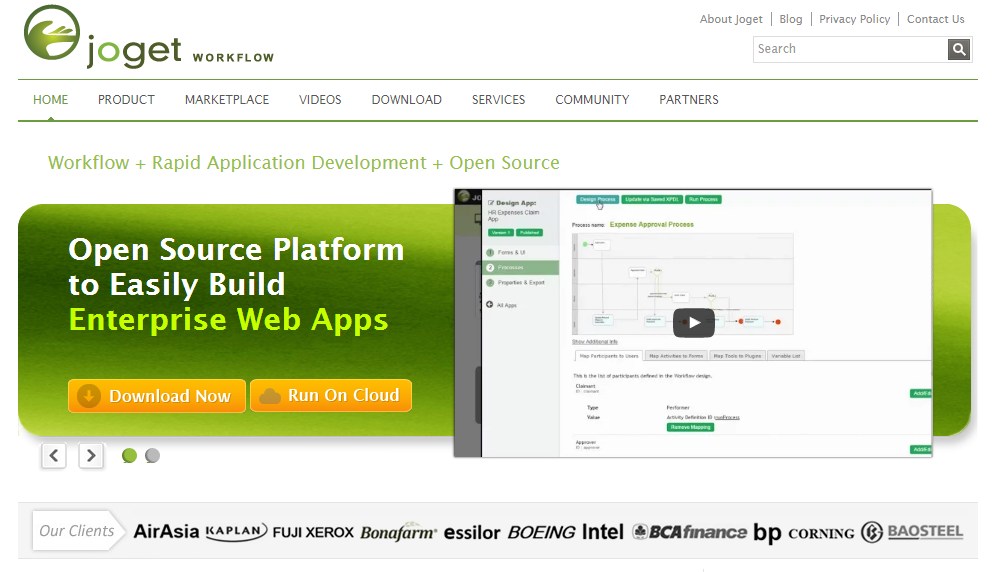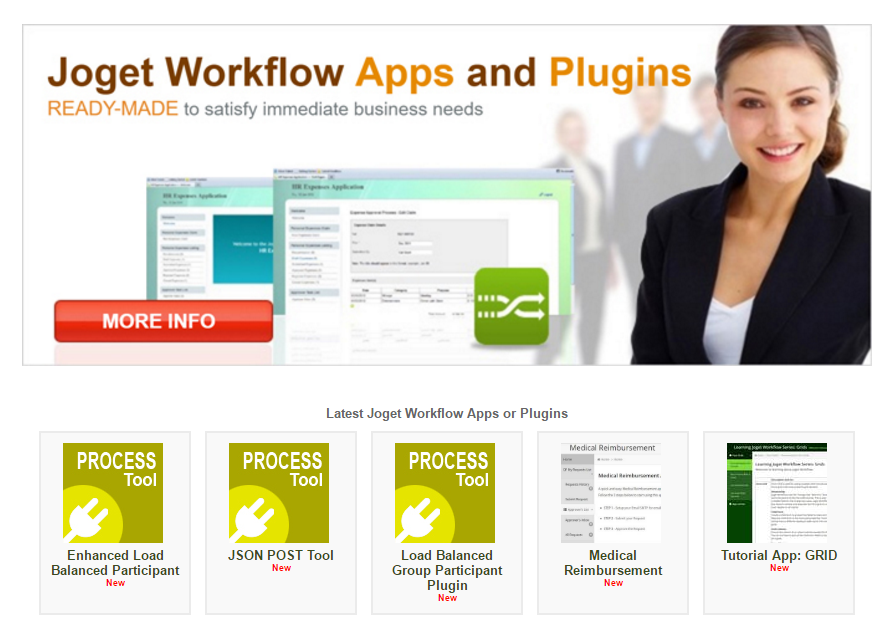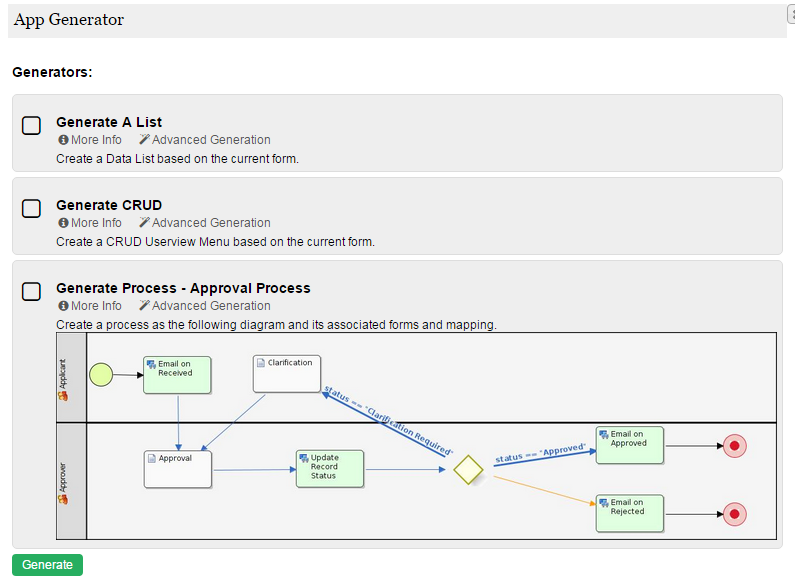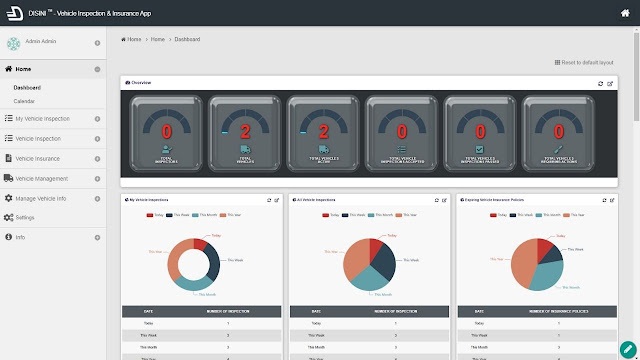The Joget Advantage: Things You Probably Didn't Know About Joget Workflow
A few years ago, we published a post about the advantages of Joget Workflow and why everyone needed to pay attention to the platform. Back then, Joget Workflow was in its third edition and in the post, we talked about the key benefits offered by the v3.
But years have come and gone and Joget Workflow has gone through a handful of upgrades and revisions, and new features have been added, too. More importantly, the platform has evolved from being just a workflow and business process management (BPM) engine to a full-fledged suite of tools for building business applications that matter.
This simply means there are more things you can do with Joget Workflow now than we covered in the v3 post back in 2011.
So we’re putting this together to help you have a more comprehensive knowledge of what you can accomplish with Joget Workflow, plus some major advantages associated with the platform. But before we get to that, let's quickly get a handle on what the platform is about, for those who don’t know.
What is Joget Workflow?

Joget Workflow is an open source web-based workflow software to easily build enterprise web apps.
But Joget Workflow wasn't always like this. Initially, when Joget Workflow was first rolled out in 2009, the platform was crafted as an open source workflow management system for automating business processes and people-driven workflows. However, we wanted something more than that. So in 2012, we advanced from being a workflow system to a full-blown web application development platform.
Today, we've reached hundreds of thousands of downloads, with an army of incredibly happy users.
So what’s the thing with Joget Workflow? What makes the platform loved by people the world over? What are the benefits that are pulling together this troop of die-hard users? Let's have a look:
What Makes Joget Workflow Unique?
See, organizations are continuously looking for easier, quicker, and cheaper ways to build and deploy business processes and enterprise apps.
Traditionally, these two are handled manually. Manual business process management comes with lots of problems including high costs, human errors, inefficiency, unnecessary paperwork, and lots more. On the other hand, traditional software development is slow, requires high costs to maintain code, is designed only for software experts, among other downsides.
Occasionally, software providers have tried to resolve these issues through the development of workflow automation/BPM products and rapid application development (RAD) tools respectively.
But the problem is this: Most of these BPM and RAD products are typically constrained and limited in their capacity to deliver desirable results in a timely fashion. They’re essentially process-centric, which means no versatility.
This is where Joget Workflow comes in handy.

The Joget platform fills the gap by combining the best of both BPM and RAD, to allow both business users and IT professionals easily and quickly develop usable end-to-end enterprise web applications that support cloud and mobile, in a cost-effective way.
Digging Deeper Into Joget
To get a clearer picture of the awesomeness of Joget Workflow, it necessary to drill down a bit further into it. Here are the tools you'd come across in Joget:
1. Process Builder
Process Builder is a tool for building and modeling business processes. You can use it directly in the web browser and so does not need to be installed.

With a drag-and-drop interface, you can easily add, edit and execute processes, monitor ongoing and completed processes, and integrate with external systems using plugins.
2. Datalist Builder
The Joget Datalist Builder lets users build, design, and organize their data in tabular data lists which can be sorted, paged, and filtered.

Its drag-and-drop interface makes building data lists even easier as you can easily add new columns, for instance. Users can use configurable data binders to load data from different sources, extend those data binders using plugins, and easily preview their tabular data listings.
3. Form Builder
User Management: Joget Workflow also lets you manage users, groups, and organizational charts with its user management tool. And through plugins, you can do things like integrating users to external directory systems like LDAP or Active Directory.
Integration: Using plugins built on JavaScript and JSON APIs, you can integrate with external web-based technologies like PHP and .NET, portals like Microsoft SharePoint, CMS platforms like WordPress and Joomla, and vertical solutions built by SI or ISV.
Plugin-Oriented Architecture: Joget Workflow has a good deal of plugins developed and managed by a group of remarkably talented software engineers. With this dynamic plugin architecture, users can enhance and extend functionalities, bring data into data lists, and integrate with external systems like JSON, SOAP, and SQL/JDBC as there are pluggable elements in forms, processes, and UI.
Front-end Edit: This feature is designed to improve web app maintainability. It eases development as lists, forms, and pages can be edited without sweat. Perhaps, the most beautiful part is that you get immediate results even while still making the tweaks.
Joget Marketplace: One remarkable thing with Joget is that it doesn't leave you needing to design and build your apps from scratch. In the Joget Marketplace, you can find apps to use as templates, easily import and export apps, and seamlessly download ready-made apps and plugins.

The Joget Advantage
Joget Workflow is designed with the end-user in mind. Thus, it is built to deliver the following benefits.
1. Simplicity
But years have come and gone and Joget Workflow has gone through a handful of upgrades and revisions, and new features have been added, too. More importantly, the platform has evolved from being just a workflow and business process management (BPM) engine to a full-fledged suite of tools for building business applications that matter.
This simply means there are more things you can do with Joget Workflow now than we covered in the v3 post back in 2011.
So we’re putting this together to help you have a more comprehensive knowledge of what you can accomplish with Joget Workflow, plus some major advantages associated with the platform. But before we get to that, let's quickly get a handle on what the platform is about, for those who don’t know.
What is Joget Workflow?
Joget Workflow is an open source web-based workflow software to easily build enterprise web apps.
But Joget Workflow wasn't always like this. Initially, when Joget Workflow was first rolled out in 2009, the platform was crafted as an open source workflow management system for automating business processes and people-driven workflows. However, we wanted something more than that. So in 2012, we advanced from being a workflow system to a full-blown web application development platform.
Today, we've reached hundreds of thousands of downloads, with an army of incredibly happy users.
So what’s the thing with Joget Workflow? What makes the platform loved by people the world over? What are the benefits that are pulling together this troop of die-hard users? Let's have a look:
What Makes Joget Workflow Unique?
See, organizations are continuously looking for easier, quicker, and cheaper ways to build and deploy business processes and enterprise apps.
Traditionally, these two are handled manually. Manual business process management comes with lots of problems including high costs, human errors, inefficiency, unnecessary paperwork, and lots more. On the other hand, traditional software development is slow, requires high costs to maintain code, is designed only for software experts, among other downsides.
Occasionally, software providers have tried to resolve these issues through the development of workflow automation/BPM products and rapid application development (RAD) tools respectively.
But the problem is this: Most of these BPM and RAD products are typically constrained and limited in their capacity to deliver desirable results in a timely fashion. They’re essentially process-centric, which means no versatility.
This is where Joget Workflow comes in handy.
The Joget platform fills the gap by combining the best of both BPM and RAD, to allow both business users and IT professionals easily and quickly develop usable end-to-end enterprise web applications that support cloud and mobile, in a cost-effective way.
Digging Deeper Into Joget
To get a clearer picture of the awesomeness of Joget Workflow, it necessary to drill down a bit further into it. Here are the tools you'd come across in Joget:
1. Process Builder
Process Builder is a tool for building and modeling business processes. You can use it directly in the web browser and so does not need to be installed.
With a drag-and-drop interface, you can easily add, edit and execute processes, monitor ongoing and completed processes, and integrate with external systems using plugins.
2. Datalist Builder
The Joget Datalist Builder lets users build, design, and organize their data in tabular data lists which can be sorted, paged, and filtered.
Its drag-and-drop interface makes building data lists even easier as you can easily add new columns, for instance. Users can use configurable data binders to load data from different sources, extend those data binders using plugins, and easily preview their tabular data listings.
3. Form Builder
Form Builder is a useful tool with a drag-and-drop feature for easily designing web-based forms.

It offers flexible form layout and configuration, wizard-style property dialogs, and the ability to extend form element types using plugins.
4. Userview Builder
Userview Builder is a web-based solution for seamlessly designing front-end user interface (UI) for applications. You can add forms or data listings, configure and select what you want to be displayed, and enable mobile view for mobile devices, or even preview your web app UI.

Just as the above-mentioned tools, it requires no client-installation but supports a drag-and-drop environment.
Userview Builder makes use of forms and datalists to support CRUD (create, read, update, delete) for data management. It comes with configurable userview design themes and can extend userview functionality using menu type plugins.
5. App Generator
The Joget App Generator tool helps to accelerate web app development. Users can generate apps from forms and as well auto-generate lists, processes, and UI. It also makes it easy to create prototypes in minutes.

There are also ready-made process templates available for those who don't feel like generating processes from scratch.
What More Can You Do With Joget Workflow?
It offers flexible form layout and configuration, wizard-style property dialogs, and the ability to extend form element types using plugins.
4. Userview Builder
Userview Builder is a web-based solution for seamlessly designing front-end user interface (UI) for applications. You can add forms or data listings, configure and select what you want to be displayed, and enable mobile view for mobile devices, or even preview your web app UI.
Just as the above-mentioned tools, it requires no client-installation but supports a drag-and-drop environment.
Userview Builder makes use of forms and datalists to support CRUD (create, read, update, delete) for data management. It comes with configurable userview design themes and can extend userview functionality using menu type plugins.
5. App Generator
The Joget App Generator tool helps to accelerate web app development. Users can generate apps from forms and as well auto-generate lists, processes, and UI. It also makes it easy to create prototypes in minutes.
There are also ready-made process templates available for those who don't feel like generating processes from scratch.
What More Can You Do With Joget Workflow?
User Management: Joget Workflow also lets you manage users, groups, and organizational charts with its user management tool. And through plugins, you can do things like integrating users to external directory systems like LDAP or Active Directory.
Integration: Using plugins built on JavaScript and JSON APIs, you can integrate with external web-based technologies like PHP and .NET, portals like Microsoft SharePoint, CMS platforms like WordPress and Joomla, and vertical solutions built by SI or ISV.
Plugin-Oriented Architecture: Joget Workflow has a good deal of plugins developed and managed by a group of remarkably talented software engineers. With this dynamic plugin architecture, users can enhance and extend functionalities, bring data into data lists, and integrate with external systems like JSON, SOAP, and SQL/JDBC as there are pluggable elements in forms, processes, and UI.
Front-end Edit: This feature is designed to improve web app maintainability. It eases development as lists, forms, and pages can be edited without sweat. Perhaps, the most beautiful part is that you get immediate results even while still making the tweaks.
Joget Marketplace: One remarkable thing with Joget is that it doesn't leave you needing to design and build your apps from scratch. In the Joget Marketplace, you can find apps to use as templates, easily import and export apps, and seamlessly download ready-made apps and plugins.
The Joget Advantage
Joget Workflow is designed with the end-user in mind. Thus, it is built to deliver the following benefits.
1. Simplicity
From design to usability, Joget Workflow is simplicity-typified. Unlike what's out there, you don't need to go through complex steps to build apps or create processes. With just a web browser, you can turn your ideas into apps and maintain them properly, without the need to go through the long process of installation.
And if you don't feel like lifting a finger but want your processes to start running already, there’s the Joget Marketplace with a fistful of ready-made out of the box apps and plugins you can use right off the bat. There's also the hosted Joget Workflow On-Demand service for quickly building custom apps and automating processes without worrying about any infrastructure issues.

2. Cost-saving
One of the major challenges faced by organizations in the area of BPM and application development is high costs in terms of money and time. Some tools on the market today, cost a pretty penny but actually deliver low value.
Joget Workflow saves costs of time and money. Rather than investing separately in a BPM tool and RAD product, organizations can get better returns on their investment at a lower cost. You also won't have to waste time switching back and forth between a BPM platform and a RAD tool.
To top it off, Joget Workflow’s focus on simplicity reduces the time it takes to build apps from months to weeks or days, or even just minutes for working prototypes. This goes to save you money and eliminates unnecessary headaches.
3. Zero/low level of programming knowledge requirements
So you need programming knowledge to be able to develop apps, huh? Well, not with Joget.
Here, anybody can easily build operable apps without writing a line of code. Why? Joget Workflow supports both codeless and low-code development.
For pro developers, Joget helps to reduce the time and effort it takes to build apps, while accelerating process and increasing productivity.
For non-technical users, you can be sure to create apps you love even without ever knowing what code means. It's the 21st century, remember.
4. Flexibility and versatility
Imagine using a system that doesn't allow you the freedom to customize your work to what you want, or that only lets you fribble around one ironbound developmental activity illiberally. I bet you wouldn't want to work with that kind of tool.
Unlike many BPM and RAD products on the market, Joget Workflow offers great flexibility and versatility.
We believe these two are very vital for software, especially for areas like business process management and application development.
To start with, our platform is open source. It can be used to create versatile enterprise web apps to execute various business functions. And web apps created with Joget Workflow can be used on any device without being OS-dependent or platform-centric.
Plugins and APIs are available to integrate and extend to external systems as you like.
5. Accountability and security
If you've ever used software that caters to a business need, you'd know the importance of accountability and security in software.
The good thing is, at Joget, we pay great attention to these concerns. We understand that unsatisfactory security can lead to serious issues for users, so we work to ensure that our users get the most authentic security possible, coupled with openness and accountability.
THE FUTURE OF JOGET
We've made tremendous progress in our efforts to bring our next major edition on board.
While Joget Workflow v6 will carry on the good attributes found in v5, it's an even better edition. It'll come with great stuff but our focus for v6 stays around User Experience (UX), Maintainability, and Performance.
Feel free to leave your questions and thoughts below and we'll be happy to help.
And if you don't feel like lifting a finger but want your processes to start running already, there’s the Joget Marketplace with a fistful of ready-made out of the box apps and plugins you can use right off the bat. There's also the hosted Joget Workflow On-Demand service for quickly building custom apps and automating processes without worrying about any infrastructure issues.
2. Cost-saving
One of the major challenges faced by organizations in the area of BPM and application development is high costs in terms of money and time. Some tools on the market today, cost a pretty penny but actually deliver low value.
Joget Workflow saves costs of time and money. Rather than investing separately in a BPM tool and RAD product, organizations can get better returns on their investment at a lower cost. You also won't have to waste time switching back and forth between a BPM platform and a RAD tool.
To top it off, Joget Workflow’s focus on simplicity reduces the time it takes to build apps from months to weeks or days, or even just minutes for working prototypes. This goes to save you money and eliminates unnecessary headaches.
3. Zero/low level of programming knowledge requirements
So you need programming knowledge to be able to develop apps, huh? Well, not with Joget.
Here, anybody can easily build operable apps without writing a line of code. Why? Joget Workflow supports both codeless and low-code development.
For pro developers, Joget helps to reduce the time and effort it takes to build apps, while accelerating process and increasing productivity.
For non-technical users, you can be sure to create apps you love even without ever knowing what code means. It's the 21st century, remember.
4. Flexibility and versatility
Imagine using a system that doesn't allow you the freedom to customize your work to what you want, or that only lets you fribble around one ironbound developmental activity illiberally. I bet you wouldn't want to work with that kind of tool.
Unlike many BPM and RAD products on the market, Joget Workflow offers great flexibility and versatility.
We believe these two are very vital for software, especially for areas like business process management and application development.
To start with, our platform is open source. It can be used to create versatile enterprise web apps to execute various business functions. And web apps created with Joget Workflow can be used on any device without being OS-dependent or platform-centric.
Plugins and APIs are available to integrate and extend to external systems as you like.
5. Accountability and security
If you've ever used software that caters to a business need, you'd know the importance of accountability and security in software.
The good thing is, at Joget, we pay great attention to these concerns. We understand that unsatisfactory security can lead to serious issues for users, so we work to ensure that our users get the most authentic security possible, coupled with openness and accountability.
THE FUTURE OF JOGET
We've made tremendous progress in our efforts to bring our next major edition on board.
While Joget Workflow v6 will carry on the good attributes found in v5, it's an even better edition. It'll come with great stuff but our focus for v6 stays around User Experience (UX), Maintainability, and Performance.
Feel free to leave your questions and thoughts below and we'll be happy to help.



Comments
Post a Comment